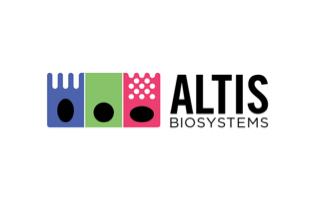TECHNOLOGY SPONSOR: Bioanalytical Services
Altis Biosystems, one of That's Nice's Road to 2021 sponsors, discusses how the company is envisioning the future of the pharma/biopharma industry.
There is a growing need to address the high failure rate of drug candidates as they progress through clinical trials. Altis Biosystems aims to bring its technological advances to the forefront, enabling the drug development process to more effectively translate results from preclinical experiments to late-stage clinical trials.
Breaking the Conformity of Inadequate Testing Platforms
The struggle for companies to successfully transition promising preclinical research to late-stage clinical trials has existed for decades. Roughly 85–90% of drug candidates either display toxic side effects or fail to show efficacy once they are tested in real-world conditions. Rectifying this issue would lead to a massive growth in efficiency for pharmaceutical companies, reducing costs and freeing resources to invest in other innovations. It is here that Altis Biosystems can enhance the robustness of preclinical research, improving the quality of predictive models so that researchers can have increased confidence in the viability of drug candidates as they progress into clinical trials.
Typically, preclinical studies are conducted using either tumor tissue cell culture lines or whole-animal studies, but only include limited experiments employing primary human tissues. By underutilizing primary human tissues, it is unsurprising that many of these experiments do not accurately reflect human biology and disease states or translate well into clinical studies. We believe that, with an improved platform to undertake these initial experiments, developers can move forward with greater conviction concerning early results.
In the past, experts may have balked at the cost and difficulty of using primary human tissue: its limited viability; its need for multiple donors and the inconsistency this can bring; and its poor proliferative capacity. However, with new stem cell technologies, it is now possible to use primary human stem cells and induced pluripotent stem cells (iPSCs) to create cell lines and tissues in the lab. iPSCs are a cutting-edge technology with a wide range of applications, but they have drawbacks in achieving a physiologically accurate intestinal model. Donor cells can be easily obtained, but then they must be genetically modified to create a stem cell bank, which must then be differentiated under very strict protocols — with complex and time-consuming logistics — to create the desired lineage(s) that also possess a fetal gene expression pattern. Human intestinal stem cells, by contrast, are already epigenetically modified to limit them to a range of differentiated types but are then free to form the appropriate diversity of intestinal epithelial cell types. As such, the Altis system uses primary human stem cells to generate a platform that mimics real human intestinal biology far more accurately than models using iPSCs.
The Altis system uses primary human stem cells to generate a platform that mimics real human intestinal biology far more accurately than models using iPSCs.
Unpacking the Complexity of In Vitro Intestinal Models
Most human diseases involve a combination of effects from multiple environmental factors and multiple genes. This complexity is more pronounced with gastrointestinal studies, which must also account for the microbiome. The future of increasingly accurate intestinal models is dependent on identifying and replicating a number of specific features, including selection of primary human tissues exhibiting the target disease or disease susceptibility, co-culturing additional relevant tissues, accounting for the microbiome and the anaerobic conditions present in the lumen, and modeling the physiological mucous layer. As we model each of these factors more accurately, we will move toward an ever-more refined and effective testing platform that will enable consistent translation of preclinical results to real-world successes.
Our current foci are threefold: first, to expand our possible tissue variety, creating a biobank of donor stem cells from individuals with intestinal related diseases; second, replication of the anaerobic conditions of the intestinal lumen; and, finally, to pursue a model that recapitulates the intestinal mucous layer. We appreciate the immense difficulty of the task ahead, and our vision will require uniting experts across multiple disciplines. This challenge may not be simple, but it is certainly worthwhile.



